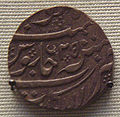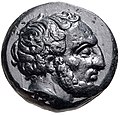Portal:Numismatics
The Numismatics Portal

Numismatics is the study or collection of currency, including coins, tokens, paper money, medals and related objects.
Specialists, known as numismatists, are often characterized as students or collectors of coins, but the discipline also includes the broader study of money and other means of payment used to resolve debts and exchange goods.
The earliest forms of money used by people are categorised by collectors as "odd and curious", but the use of other goods in barter exchange is excluded, even where used as a circulating currency (e.g., cigarettes or instant noodles in prison). As an example, the Kyrgyz people used horses as the principal currency unit, and gave small change in lambskins; the lambskins may be suitable for numismatic study, but the horses are not.[dubious ] Many objects have been used for centuries, such as cowry shells, precious metals, cocoa beans, large stones, and gems. (Full article...)
Selected article -
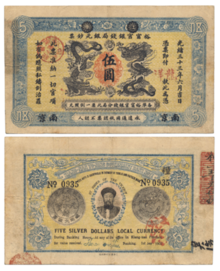
The paper money of the Qing dynasty (Traditional Chinese: 清朝鈔票) was periodically used alongside a bimetallic coinage system of copper-alloy cash coins and silver sycees; paper money was used during different periods of Chinese history under the Qing dynasty, having acquired experiences from the prior Song, Jin, Yuan, and Ming dynasties which adopted paper money but where uncontrolled printing led to hyperinflation. During the youngest days of the Qing dynasty paper money was used but this was quickly abolished as the government sought not to repeat history for a fourth time; however, under the reign of the Xianfeng Emperor, due to several large wars and rebellions (most notably the Taiping Rebellion), the Qing government was forced to issue paper money again.
The reason why the government was forced to reform the imperial monetary system with a very complex system during the Taiping Rebellion was because the rebels had blocked the access of mint metals from the southwest of China, but more money was still needed to fight the ongoing insurgency. The advisors of the Xianfeng Emperor not only introduced copper-alloy cash coins with higher denominations than one, as well as introducing new cash coins made of metals other than brass, but also revived paper money in the shape of the Xianfeng baochao (咸豐寶鈔). Quite important for the war effort is the fact that the imperial Qing government earned some revenue by issuing these new types of currencies. (Full article...)Selected image
Did you know...

- ...that with its two-dollar coin (reverse pictured), Newfoundland was the only British colony to issue circulating gold coinage?
- ...that Mount Burgess is nicknamed the Ten Dollar Mountain because it was featured on Canadian currency?
- ...that the American Buffalo gold bullion coin was the first .9999 fine 24-carat gold coin released by the United States Mint?
- ...that the Alabama centennial half dollar was the first commemorative coin minted with the image of a living individual?
- ...that Aksumite currency was the only native coinage to be issued in Africa without direct influence by an outside culture like Roman, Greek, etc...?
Related portals
Selected coin -

Selected banknote image -

Credit: commons:User:Schutz.
A 1000 Swiss franc note, the fourth highest non-commemorative banknote in the world.
General images -
Numismatic terminology
- Bullion – Precious metals (platinum, gold and silver) in the form of bars, ingots or plate.
- Error – Usually a mis-made coin not intended for circulation, but can also refer to an engraving or die-cutting error not discovered until the coins are released to circulation. This may result is two or more varieties of the coin in the same year.
- Exonumia – The study of coin-like objects such as token coins and medals, and other items used in place of legal currency or for commemoration.
- Fineness – Purity of precious metal content expressed in terms of one thousand parts. 90% is expressed as .900 fine.
- Notaphily – The study of paper money or banknotes.
- Scripophily – The study and collection of stocks and Bonds.
WikiProjects
Numismatic topics
Money - Coins - Banknotes - Electronic money - Exchange rate - Legal tender - Clubs - Terminology
Ancient currency: Asia - Byzantium - Greece - Primitive Money - Roman - Indian coinage
Modern currency: Africa - The Americas - Asia and the Pacific - Europe - Bullion coins - Challenge coin - Commemorative coins - Token coins
Economics: Banking - Bonds - Cheques - Credit Cards - Fiat currency - Gold standard - Mints - Monetary union - Reserve currency - Stocks
Production: Coining (machining) - Designers - Die making - Mint (coin) • Coinage Metals: Aluminum - Bronze - Copper - Gold - Platinum - Silver - Tin
Subcategories
Most traded currencies
| Rank | Currency | ISO 4217 code |
Symbol or abbreviation |
Proportion of daily volume | Change (2019–2022) | |
|---|---|---|---|---|---|---|
| April 2019 | April 2022 | |||||
| 1 | U.S. dollar | USD | US$ | 88.3% | 88.5% | |
| 2 | Euro | EUR | € | 32.3% | 30.5% | |
| 3 | Japanese yen | JPY | ¥ / 円 | 16.8% | 16.7% | |
| 4 | Sterling | GBP | £ | 12.8% | 12.9% | |
| 5 | Renminbi | CNY | ¥ / 元 | 4.3% | 7.0% | |
| 6 | Australian dollar | AUD | A$ | 6.8% | 6.4% | |
| 7 | Canadian dollar | CAD | C$ | 5.0% | 6.2% | |
| 8 | Swiss franc | CHF | CHF | 4.9% | 5.2% | |
| 9 | Hong Kong dollar | HKD | HK$ | 3.5% | 2.6% | |
| 10 | Singapore dollar | SGD | S$ | 1.8% | 2.4% | |
| 11 | Swedish krona | SEK | kr | 2.0% | 2.2% | |
| 12 | South Korean won | KRW | ₩ / 원 | 2.0% | 1.9% | |
| 13 | Norwegian krone | NOK | kr | 1.8% | 1.7% | |
| 14 | New Zealand dollar | NZD | NZ$ | 2.1% | 1.7% | |
| 15 | Indian rupee | INR | ₹ | 1.7% | 1.6% | |
| 16 | Mexican peso | MXN | MX$ | 1.7% | 1.5% | |
| 17 | New Taiwan dollar | TWD | NT$ | 0.9% | 1.1% | |
| 18 | South African rand | ZAR | R | 1.1% | 1.0% | |
| 19 | Brazilian real | BRL | R$ | 1.1% | 0.9% | |
| 20 | Danish krone | DKK | kr | 0.6% | 0.7% | |
| 21 | Polish złoty | PLN | zł | 0.6% | 0.7% | |
| 22 | Thai baht | THB | ฿ | 0.5% | 0.4% | |
| 23 | Israeli new shekel | ILS | ₪ | 0.3% | 0.4% | |
| 24 | Indonesian rupiah | IDR | Rp | 0.4% | 0.4% | |
| 25 | Czech koruna | CZK | Kč | 0.4% | 0.4% | |
| 26 | UAE dirham | AED | د.إ | 0.2% | 0.4% | |
| 27 | Turkish lira | TRY | ₺ | 1.1% | 0.4% | |
| 28 | Hungarian forint | HUF | Ft | 0.4% | 0.3% | |
| 29 | Chilean peso | CLP | CLP$ | 0.3% | 0.3% | |
| 30 | Saudi riyal | SAR | ﷼ | 0.2% | 0.2% | |
| 31 | Philippine peso | PHP | ₱ | 0.3% | 0.2% | |
| 32 | Malaysian ringgit | MYR | RM | 0.2% | 0.2% | |
| 33 | Colombian peso | COP | COL$ | 0.2% | 0.2% | |
| 34 | Russian ruble | RUB | ₽ | 1.1% | 0.2% | |
| 35 | Romanian leu | RON | L | 0.1% | 0.1% | |
| 36 | Peruvian sol | PEN | S/ | 0.1% | 0.1% | |
| 37 | Bahraini dinar | BHD | .د.ب | 0.0% | 0.0% | |
| 38 | Bulgarian lev | BGN | BGN | 0.0% | 0.0% | |
| 39 | Argentine peso | ARS | ARG$ | 0.1% | 0.0% | |
| … | Other | 1.8% | 2.3% | |||
| Total[a] | 200.0% | 200.0% | ||||
Web resources
- NumisWiki
- International Association of Professional Numismatists
- American Numismatic Association
- American Numismatic Society
- British Numismatic Association
- American Vecturist Association
- Challenge Coin Association
- Numismatic Museum of Athens, Greece
- The Perth Mint Australia
- Central Mint of China
- Royal Mint
- The French Mint
- United States Mint
- Bank of Russia
- Royal Canadian Mint
- Exact Change numismatic software
Things you can do
|
|
 |
Here are some tasks awaiting attention:
|
Associated Wikimedia
The following Wikimedia Foundation sister projects provide more on this subject:
-
Commons
Free media repository -
Wikibooks
Free textbooks and manuals -
Wikidata
Free knowledge base -
Wikinews
Free-content news -
Wikiquote
Collection of quotations -
Wikisource
Free-content library -
Wikiversity
Free learning tools -
Wiktionary
Dictionary and thesaurus
Sources
- ^ Triennial Central Bank Survey Foreign exchange turnover in April 2022 (PDF) (Report). Bank for International Settlements. 27 October 2022. p. 12. Archived (PDF) from the original on 2022-10-27.
- ^ The total sum is 200% because each currency trade is counted twice: once for the currency being bought and once for the one being sold. The percentages above represent the proportion of all trades involving a given currency, regardless of which side of the transaction it is on. For example, the US dollar is bought or sold in 88% of all currency trades, while the euro is bought or sold in 31% of all trades.






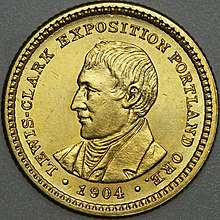



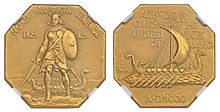


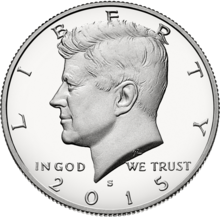







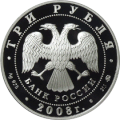






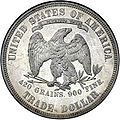


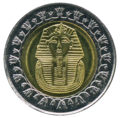






















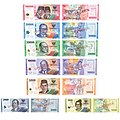



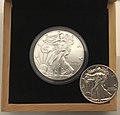

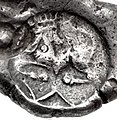


![Image 50Chinese round coins, Eastern Zhou dynasty – Warring States Period, c. 300–220 BC. Four Hua (四化, 30mm, 6.94 g). Legend Yi Si Hua ([City of] Yi Four Hua). (from Coin)](http://upload.wikimedia.org/wikipedia/commons/thumb/f/f9/CHINA%2C_Eastern_Zhou_dynasty_-_Warring_States_Period._State_of_Q%C3%AD._City_of_Yi._Circa_300-220_BC.jpg/120px-CHINA%2C_Eastern_Zhou_dynasty_-_Warring_States_Period._State_of_Q%C3%AD._City_of_Yi._Circa_300-220_BC.jpg)
